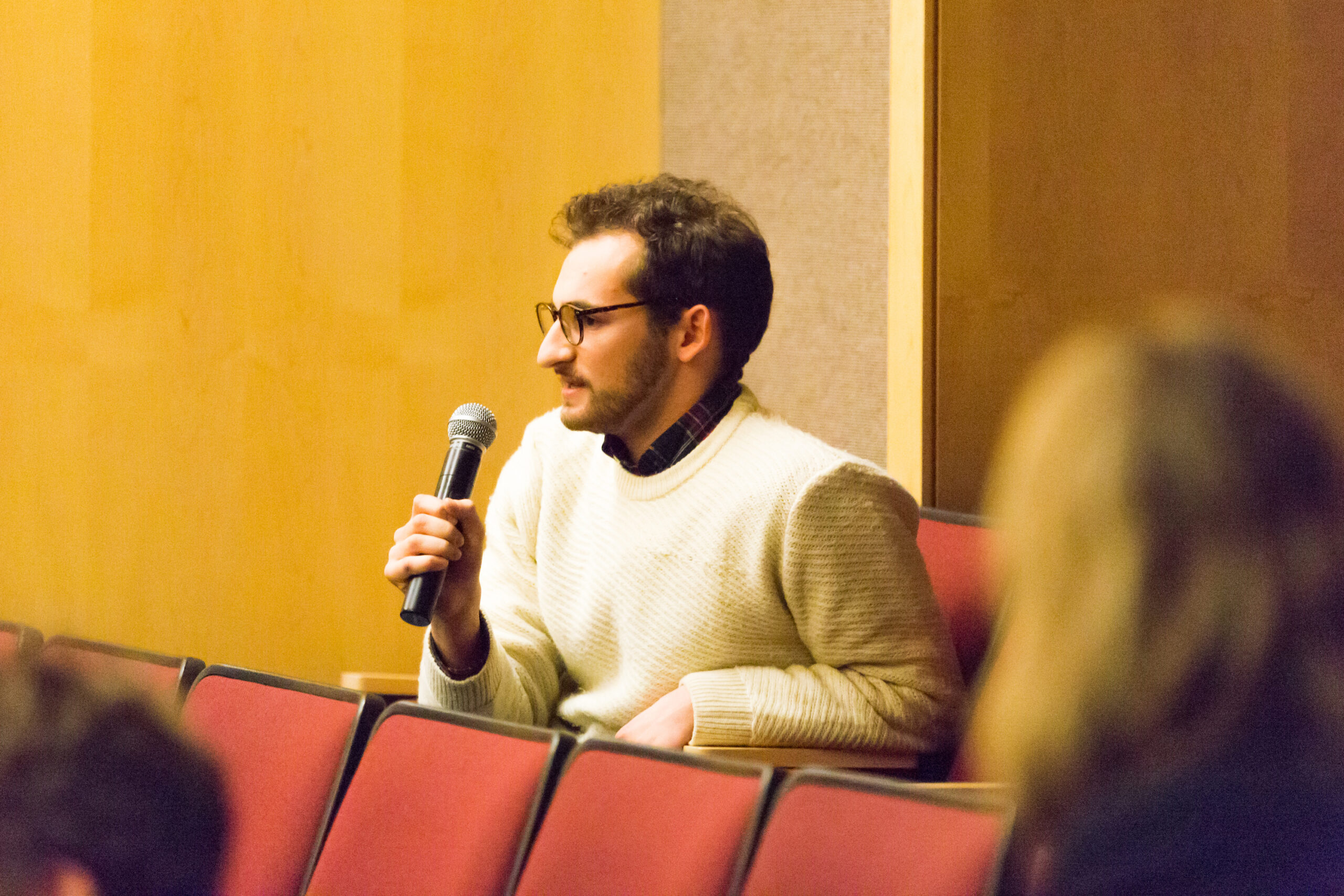‘How to Survive a Plague:’ Peter Staley on AIDS activism
December 1, 2017
 PJ Seelert
PJ SeelertPeter Staley was working as a bond trader at JP Morgan when he was diagnosed with AIDS-related complex in 1985. The country was in the midst of an AIDS crisis, and homophobic sentiment was at an all-time high.
Staley visited campus on Tuesday night for a screening of “How to Survive a Plague,” the 2012 Oscar-nominated documentary in which he was featured, as part of programming for World AIDS Day. The documentary presents an authentic, insightful and heart-wrenchingly powerful chronology of AIDS activism in the 1980s.
“[JP Morgan] was one of the most male-dominated, misogynist, homophobic work environments in the country at the time. It felt like working in a men’s locker room in high school,” said Staley. “I wasn’t out to my family … I had this very bifurcated life.”
Staley’s life took a drastic turn in 1987, when he stumbled upon a demonstration on Wall Street by AIDS Coalition to Unleash Power (ACT UP). Staley remarked on witnessing its transformation into the greatest movement in LGBT history.
“I’ve never had more life pumped into me in such a short time. The first meeting I went to had over 100 people, filled with the sense of unity and purpose and seemingly no doubts that they were already making history,” he said. “And it just kept rolling from there…ACT UP became my religion.”
The political action group ACT UP was founded in 1987 by playwright and activist Larry Kramer. Since its conception, ACT UP’s mission has been to effect change through protesting various organizations, including pharmaceutical companies that overcharged for AIDS medicine. The group’s protests even succeeded in shutting down the Food and Drug Administration (FDA) for a day as part of an effort to urge the agency to approve potentially life-saving drugs. ACT UP represented the gay community’s outcry after six years of battling in anger, fear and desperation. The film shows a clip of Staley hanging up a banner at the FDA headquarters with the words “Silence=Death.”
“It was the first time Americans had seen hundreds of homosexuals doing anything,” said Staley. “We were the Occupy [Wall Street] of our age, the Black Lives Matter of our time—[keeping] AIDS in national news for at least three years.”
“We shattered the American myth of the homosexual as weak, cowering in shadows, too afraid to stand up for himself,” he added.
The film documents activists’ race against time as they fight for new treatments, FDA approvals, federal funding and public support. Featuring footage and first-person stories from ACT UP members, many of whom were HIV-positive, the rage and sadness became palpable as efforts were shut down by indifferent politicians.
The most powerful moments of the film are those of grief—members dumping ashes of AIDS victims onto the White House lawn—as well as those of great resilience, as members continue to fight with unyielding conviction and determination.
“Each and every week, it had a heavy mix of selflessness, anger, empathy, passion, love, youth, power, sexiness, laughter and tears,” Staley said. “We use reason to suppress fear and refuse to let a virus divide us.”
Staley, who is an Oberlin College graduate and brother of Trustee Jes Staley ’79, P’11, came to the College to screen the film after it first came out in 2012. His return to Bowdoin was organized by his niece Rowan Staley ’18 and June Lei ’18, who both share a passion for the cause.
“I had been introduced to these films by an organization I interned for two summers ago called Visual AIDS,” said Lei. “[Rowan and I] joined forces and started planning this larger scale program for this year.”
“I feel like it has a really multifold message,” said Rowan Staley, niece of Peter Staley. “I think to some extent it’s HIV/AIDs awareness … filling a gap that all our AP US history classes never covered. But I also think there are so many messages … as far as seeing how far LGBTQ rights have come, and also how activism can be effective.”
Activism did triumph in the end. In 1991, Staley founded the Treatment Action Group, which collaborates with pharmaceutical companies to conduct AIDS research. The development of protease inhibitors in 1996 represented a breakthrough in efforts to treat the virus. Staley is optimistic about the strides the movement will continue to make in the future.
“Today’s AIDS activists live in an age of having these tools, and therefore it’s a very optimistic type of activism … If you push the right political buttons, and get everybody on the same page, you can save lives in real time.”



Comments
Before submitting a comment, please review our comment policy. Some key points from the policy: